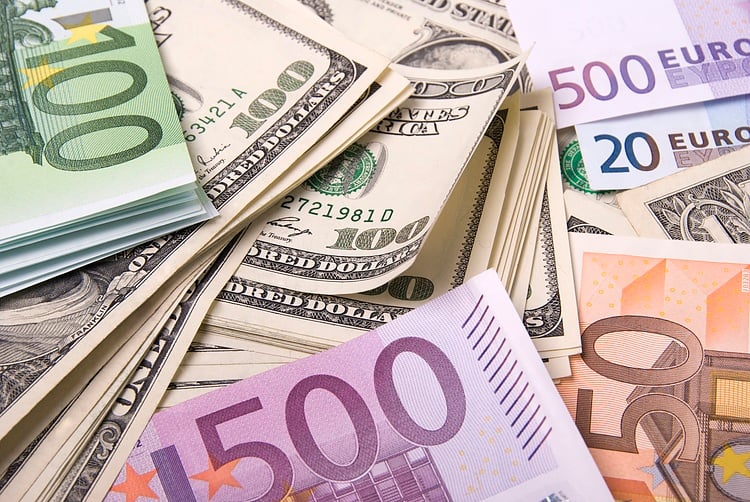- It was a choppy day, but EUR/USD ultimately finished above the 1.2100 level.
- USD saw weakness during US trading hours as risk appetite improved.
It was a choppy final trading day of the week for EUR/USD; the pair sold off during early European trading hours, dropping below its 21-day moving average at the 1.2100 level and hitting lows close to 1.2080 before a wave of USD weakness saw the pair recovery back above 1.2100 and close to the 1.2120 mark. As the weekend fast approaches, trade volumes are thinning and price action is likely to remain very subdued. On the day, the pair trades about 0.1% or 10 pips lower.
Driving the day
EUR/USD traded as a function of US dollar flows on the final trading day of the week, with markets not showing any meaningful response to the news that former ECB President Mario Draghi had officially accepted the position of Italian PM. Draghi’s arrival at the forefront of Italian politics has been greeted with jubilation in Italian financial markets (BTPs hitting record lows and the Italian FTSE MIB performing well over the past two weeks). Firstly, the uncertainty to do with an election has been avoided and with Draghi at the helm and now seemingly in command of a majority in parliament, Italy is seen as being in safe hands. As a former Eurocrat, markets might also be hoping that Draghi might be able to help drive further reform towards a more unified EU.
Looking at the USD side of the equation then; no news or particular themes can be pointed to in explanation of Friday’s price action with any certainty. Generally speaking, however, markets remain in a bullish mood given expectations for strong a strong global economic recovery to begin in the coming months. Vaccine rollouts continue and positive data is coming in (most recently from Israel) showing that vaccines are working well in preventing illness and transmission. Herd immunity will allow Covid-19 hit countries to reopen aggressively later in the year and expectations are that economic activity, particularly in the service sectors that people have been deprived from utilising for most of the last year, will boom.
The boom is set to be accelerated further by the unprecedented levels of fiscal and monetary stimulus that has been injected into the global economy over the last year (particularly in the US, where more stimulus is expected to soon pass Congress). Meanwhile, a highly dovish US Federal Reserve seems intent on looking through any strong improvement in economic conditions and allowing the economy to run hot in order to hit its elusive employment and inflation goals.
Given the above and the fact that the new flow this week has only served to strengthen such expectations, risk assets continue to perform very well; the S&P 500 just rallied to close at all-time highs, indicative of strong global equity markets, while commodities, nominal bond yields (the US 10-year moved above 1.20% on Friday) and inflation expectations also continue to rally. Real US bond yields remain low, however, given the promise of ongoing Fed support. Expectations for a global recovery, strength in risk assets and low real yields are NOT a good combination for the US dollar. As long as markets continue to party as they are right now, USD will continue to be vulnerable to further sell offs.
